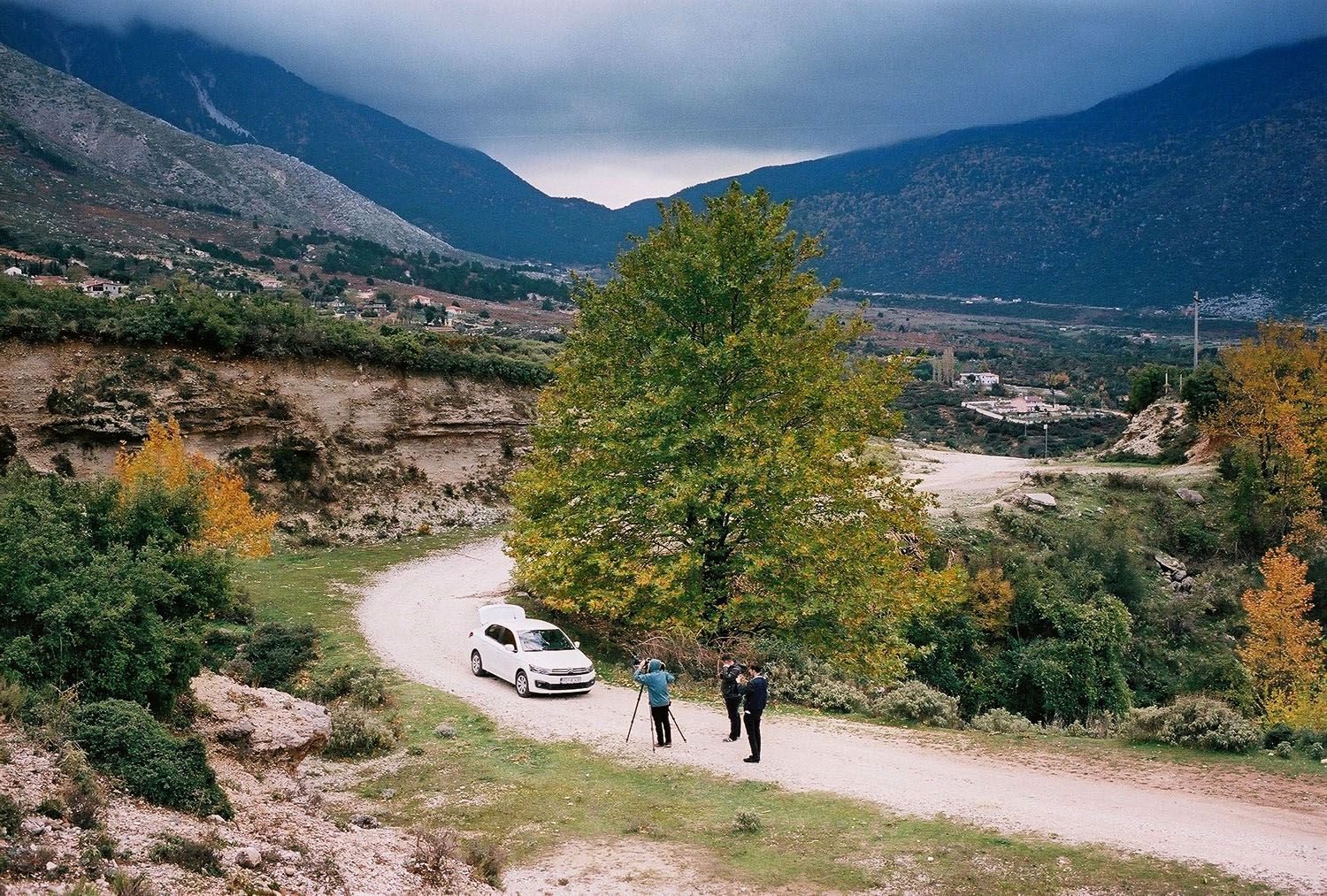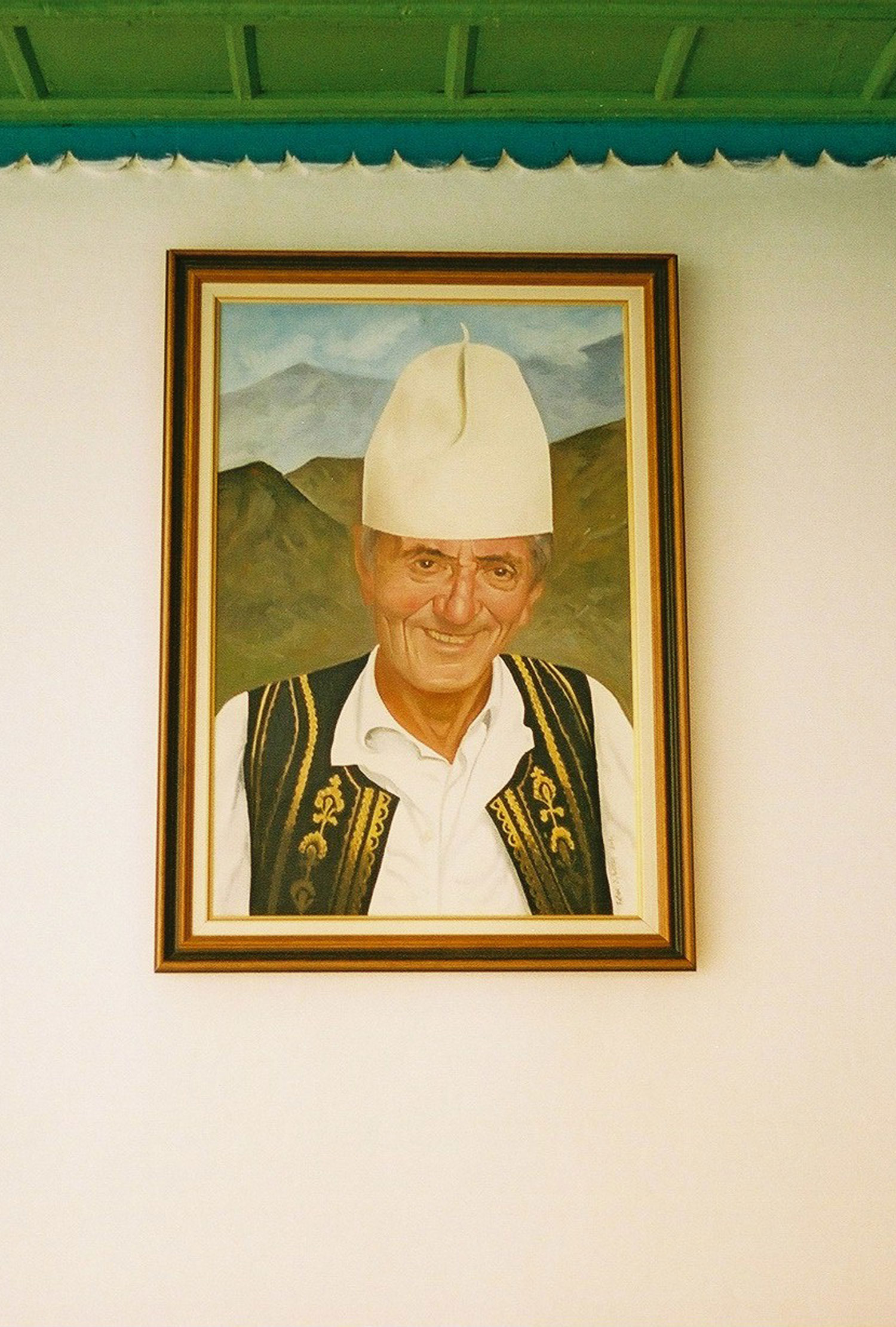Raise your voice: meet the Albanian singers carrying on an ancient choral tradition
Set against a backdrop of the dreamy mountains of Labëria in southern Albania, Washed by the Moon, British/German filmmaker Dan Shutt’s directorial debut, is a rich journey through the region’s musical history. Ahead of the film's premiere on 13 September at Calvert 22 Foundation, we invited the director to compile a mix that encapsulates the ancient Albanian tradition of polyphonic singing.
Set against a backdrop of the dreamy mountains of Labëria in southern Albania, Washed by the Moon, British/German filmmaker Dan Shutt’s directorial debut, is a rich journey through the region’s musical history. Ahead of the film’s premiere on 13 September at Calvert 22 Foundation, we invited the director to compile a mix that encapsulates the ancient Albanian tradition of isopolyphonic singing.
Southern Albania is home to isopolyphonic singing, one of many distinct traditions of polyphonic music from across the Balkans and the Caucasus. Nominated by UNESCO as a “Masterpiece of the Oral and Intangible Heritage of Humanity”, isopolyphonic singing is unique for its inclusion of the “iso” — a long, continuous monophonic drone that resonates beneath a polyphony of voices. In 2016, after hearing the song Janinës ç'i panë sytë, Shutt immediately travelled to Albania to hear more, embarking on a project that would see him visit the country repeatedly over the next couple of years. Washed by the Moon, a translation from the Albanian Laberi Lare Ne Hene, the first song Shutt heard when he visited the country, is a stunning cinematic record of his travels and a rare document of this culture, shot on a Super 16 camera with an original soundtrack of field recordings and scores composed by Shutt himself alongside Quinn Oulton.
Of the many intricate layers within the music, the most complex uses the voice to replicate goats and cows’ bells
The film follows Golik Jaupi, a well-known singer from the region, and the Grupi Lab group of isopolyphonic singers. In its opening, Vullnet Silaj, the region’s police commissioner and de facto head of the group, launches into an impromptu song, singing a new text he has just discovered by the poet Zaho Balili as he drives through the city. It is in this way that Labërian isopolyphonic melodies are born: in every song, a lead voice begins by singing a text by a poet to an improvised melody. For the first two lines they sing alone, before the rest of the group pick up the tune and begin to layer vocal harmonies. A second and often third voice joins with embellishments, cueing the iso. The sound of the iso depends on the region, and each has its own patterns of vowels; in Labëria, it is differentiated by the sound of the long “e”. As Shutt says, “the best thing about this iso is that anyone round the table can join in as long as they can hit that note. This makes it a very community-spirited type of singing, which is its inherent value and why it still exists.”
Nobody really knows the origin of this form of music; some claim Homer was referring to women singing isopolyphony on the Albanian coast when he wrote about the songs of the sirens in the Odyssey; the practice is mentioned explicitly in folk tales from 1,000 years ago. But, as Jaupi says in the film, “wherever you had three or more shepherds, you had this music”. In fact, of the many intricate layers within the music, the most complex uses the voice to replicate goats and cows’ bells. “The technique for this is extremely secret and is passed down from generation to generation. Singers who can do this are super rare — Engjell Tairaj from Grupi Lab in the film being probably the finest example of this technique in the whole country.”
Many songs tell stories of war and loss, tracing the often difficult history of Albania
A broad range of styles can be found from village to village in the region — Piluri, Bënça, Mallakastra, Tërbaçi, Smokthina. As a member of Grupi Lab says in the film, “the difference between these regions is in the themes, the melodies and the way the lyrics are structured. The terrain has an enormous effect on the music: the environment where songs are cultivated, whether in Labëria, or on the coast, or on the plains. The land creates a harmony with the music. Everything is based on the terrain upon which people live and work.” As in many folk singing traditions, songs are passed down from generation to generation. Jaupi talks of how they evolved from the funeral laments of mothers and widows in the villages; indeed, many songs tell stories of war and loss, tracing the often difficult history of Albania. As Shutt says, “sadness permeates much of that culture.”
In the towns and villages of the Lab region, isopolyphonic singing continues to be actively practiced today. “The tradition is passed on at weddings, funerals, at the dinner table, over coffee in the morning. If you go to Gjirokastra, in the bazaar in the morning some group somewhere will be singing.” Fathers teach their sons, and it’s not hard to find groups that practice and sing: “I was told that a barber was particularly good so I went there for a haircut, and he gathered a super-group for us the next day.” Originally travelling to Labëria just to hear the music, Schutt found singers who were so enthusiastic about spreading their culture that when they heard that people were coming just to hear them, they organised for a museum in Vlore to be opened in the middle of December so they could sing there. “The first song blew my mind and I was crying so much that I messed up the audio recording and never pressed record, so that first song was filmed but never made it into the documentary. A year later, we finally got a good take of it on the steps of the castle in Gjirokastra, which is now in the film.”
The singers also talk of the changes that have been felt in Albania since the fall of communism, a time when they received much support from the state and held a privileged position in the national consciousness. Since the 1990s, many members of the main groups have left the country; but, as Silaj says, “there remain those who love Këngë Labe [Song of Labëria], who gather with friends to create groups out of passion.” Today, in spite of the many young people moving to Tirana or abroad to work or study, it is still possible to find practitioners among the younger generation, as in Shutt’s barber’s super-group. At the end of the film, they can be seen continuing the isopolyphonic tradition, though without the folk costume of geleshe felt caps and fustanella skirts worn by Grupi Lab.
Today, the influence of isopolyphony can also be seen in contemporary music. Kosovar musician Ilir Bajri uses traditional recordings to compose modern music, and Andrra, the alias of Berlin-based musician and producer Fatime Kosumi, the daughter of Kosovar Albanian parents, uses the songs of her grandmothers to compose contemporary folk-electronica hybrids. In 2016, isopolyphonic music was the focus of the Albanian pavilion at the Venice Biennale, demonstrating a growing international recognition. With more Albanians in the diaspora than in the country itself, the increasing globalisation of the country could garner more broad support for the tradition, even as the threat of its disappearance remains.
Washed by the Moon will have its UK premiere at Calvert 22 Foundation in September, alongside presentations at film festivals in the Balkans and a screening in Tbilisi, Georgia in November. Shutt also has plans to bring Grupi Lab to the UK for a small run of live shows in 2019, including a slot on NTS and a show at London’s School of Oriental and African Studies (SOAS), for which he is seeking financial support. At the end of his project, he hopes the film will outlive him as a document of the culture. “Everyone who has heard isopolyphony has recognised how unique and beautiful it is, and I think the world would benefit from knowing about it.”
Text: Hannah Zafiropoulos
Image: Bruce Collier
Washed by the Moon will premiere on Thursday 13 September at Calvert 22 Foundation in London. You can find more information here.










